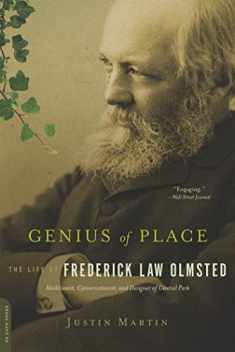
A Clearing in the Distance: Frederick Law Olmsted and America in the 19th Century
Book details
Summary
Description
In a brilliant collaboration between writer and subject, the bestselling author of Home and City Life illuminates Frederick Law Olmsted's role as a major cultural figure and a man at the epicenter of nineteenth-century American history. We know Olmsted through the physical legacy of his stunning landscapes -- among them, New York's Central Park, California's Stanford University campus, Boston's Back Bay Fens, Illinois's Riverside community, Asheville's Biltmore Estate, and Louisville's park system. He was a landscape architect before that profession was founded, designed the first large suburban community in the United States, foresaw the need for national parks, and devised one of the country's first regional plans. Olmsted's contemporaries knew a man of even more extraordinarily diverse talents. Born in 1822, he traveled to China on a merchant ship at the age of twenty-one. He cofounded The Nation magazine and was an early voice against slavery. He wrote books about the South and about his exploration of the Texas frontier. He managed California's largest gold mine and, during the Civil War, served as general secretary to the United States Sanitary Commission, the precursor of the Red Cross. Olmsted was both ruthlessly pragmatic and a visionary. To create Central Park, he managed thousands of employees who moved millions of cubic yards of stone and earth and planted over 300,000 trees and shrubs. In laying it out, "we determined to think of no results to be realized in less than forty years," he told his son, Rick. "I have all my life been considering distant effects and always sacrificing immediate success and applause to that of the future." To this day, Olmsted's ideas about people, nature, and society are expressed across the nation -- above all, in his parks, so essential to the civilized life of our cities. Rybczynski's passion for his subject and his understanding of Olmsted's immense complexity and accompli


We would LOVE it if you could help us and other readers by reviewing the book
Book review




